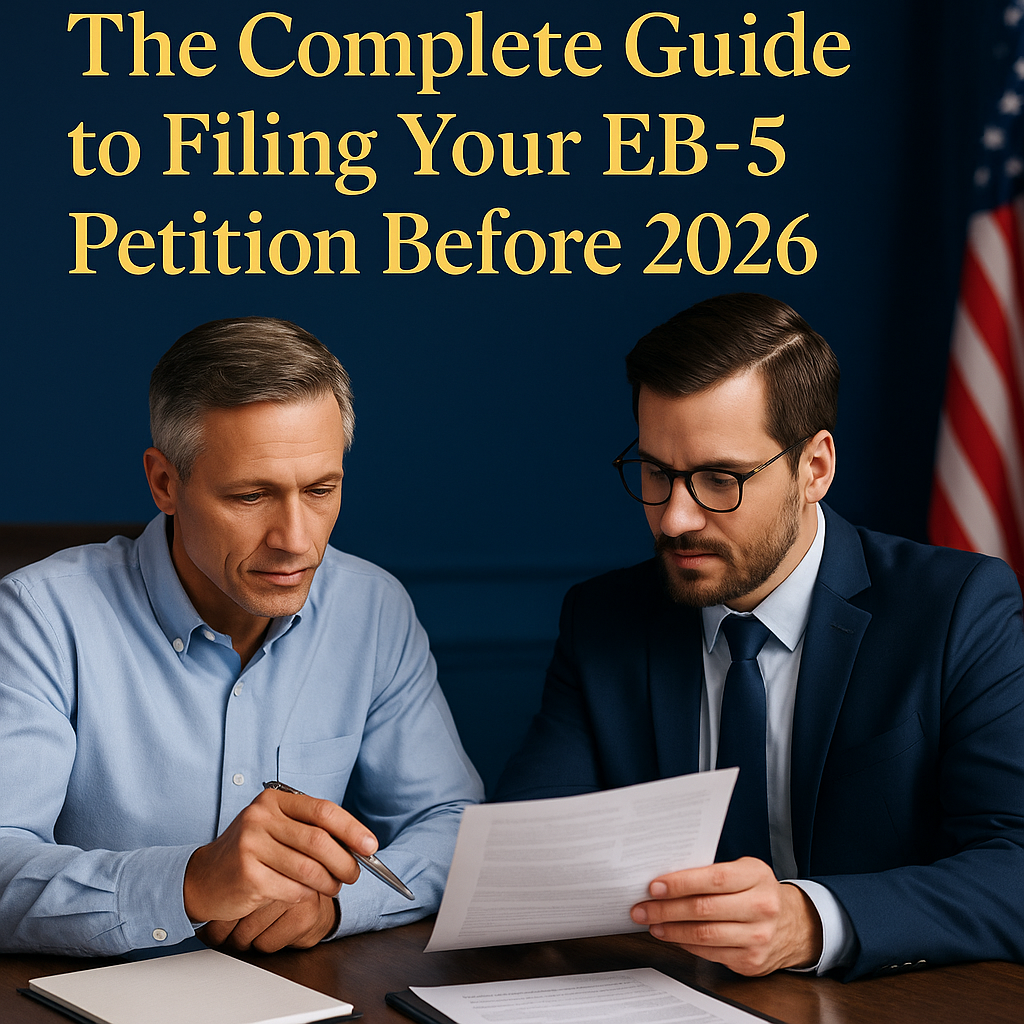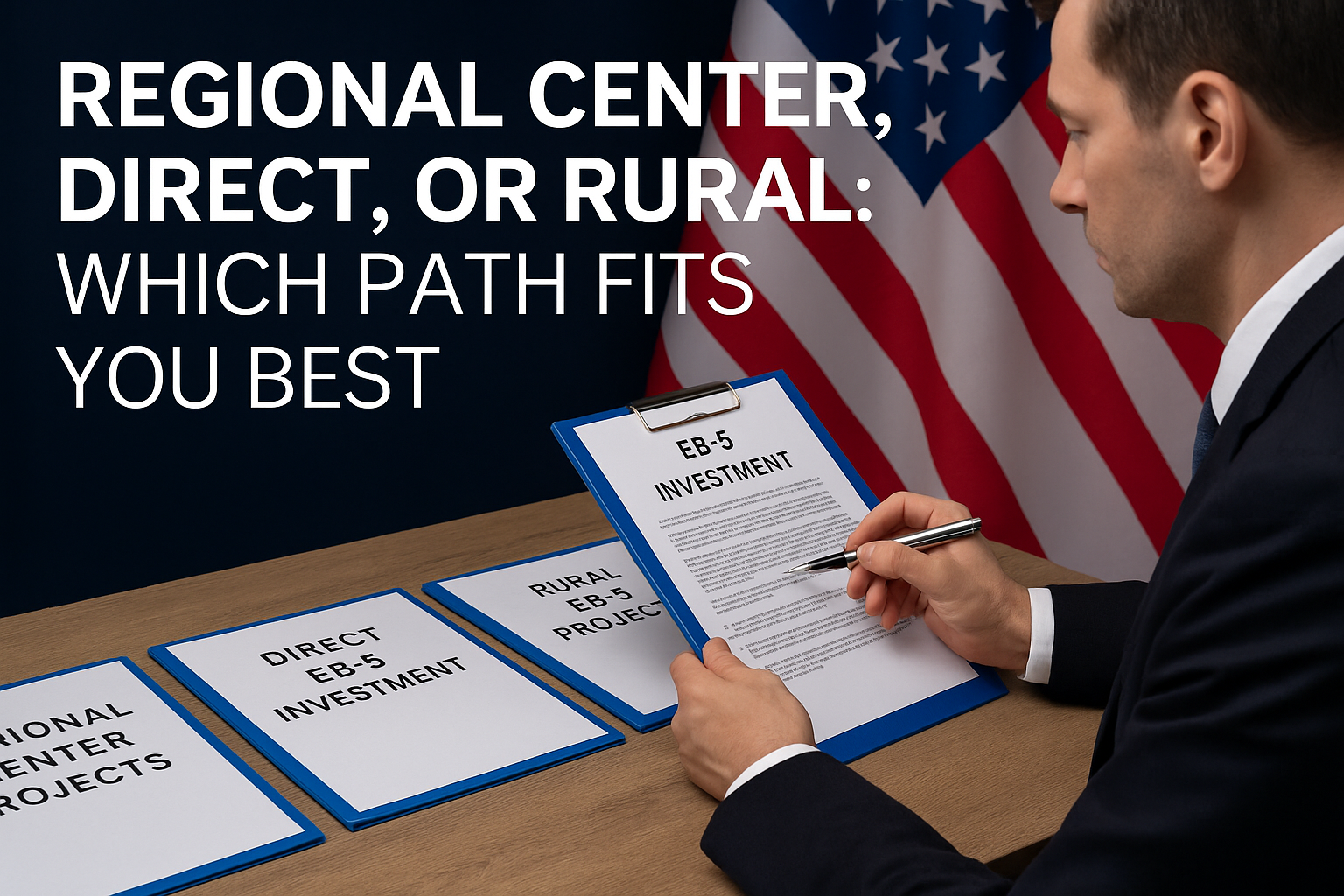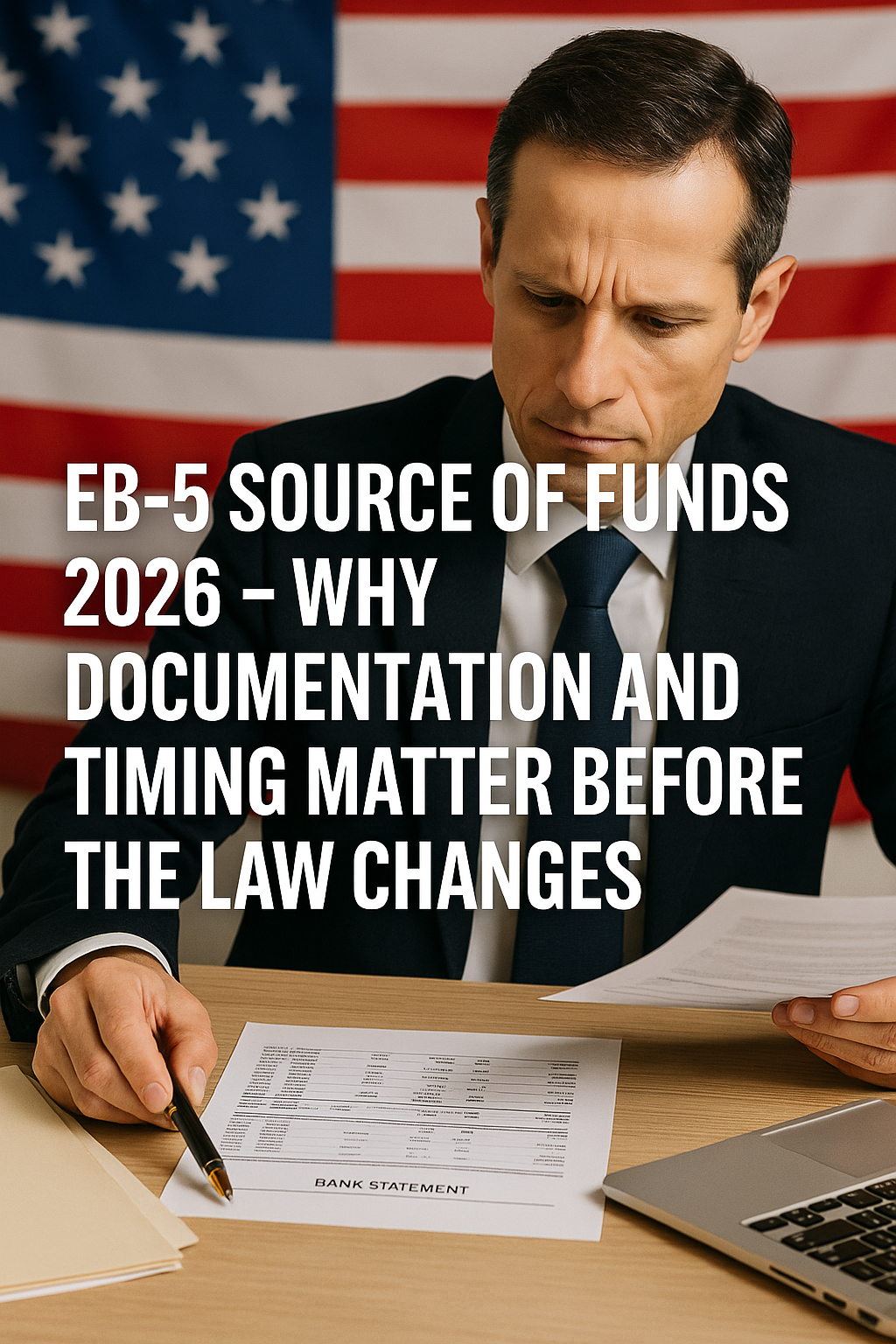For EB-5 investors, timing is as important as the investment itself.
The EB-5 Reform and Integrity Act of 2022 remains valid only until September 30, 2026. After that date, the U.S. Congress may increase investment thresholds, add new compliance requirements, or temporarily pause filings during review.
Filing your petition before this deadline secures your rights under the current law. This guide provides a clear, professional, and practical overview of every step you need to complete before submitting your EB-5 petition.
1. Confirm Your EB-5 Investment Category
Before taking any legal or financial action, identify which EB-5 structure fits your situation.
Under the current framework, investors can apply through one of three categories:
Regional Center Investment:
Funds are pooled and managed by USCIS-approved entities. Investors take a passive role and benefit from indirect job creation models.
Direct Investment:
The investor owns or manages the business directly and must create at least ten full-time W-2 jobs. This model offers greater control but also higher responsibility.
Rural or TEA Investment:
Investments in rural or high-unemployment areas qualify for a lower threshold of 800,000 USD and receive reserved visa quotas with priority processing.
What investors should verify:
Request the project’s official USCIS approval (Form I-956 or I-956G), the fund administration agreement, and audited financial oversight documentation. Do not rely on marketing materials.
2. Prepare and Verify Your Source of Funds
Your Source of Funds, also known as SOF, is the foundation of your EB-5 petition.
USCIS requires proof that every dollar you invest was legally earned, properly documented, and fully traceable.
A complete SOF file typically includes:
- Tax returns or audited financial statements from recent years
- Proof of salary, business income, or investment gains
- Property or stock sale agreements with bank transfer records
- Gift or inheritance documents with donor proof of funds
- Loan agreements that show legal collateral ownership
Professional recommendation:
Start this process early. Some banks, accountants, and tax authorities may take months to issue verified statements. Consistency across names, dates, and currency values is critical for approval.
3. Select and Engage a Qualified Immigration Attorney
A U.S. immigration attorney authorized to represent clients before USCIS is required for EB-5 filings.
Your attorney will:
- Review all offering documents for compliance with U.S. securities law
- Confirm that the project is properly registered with USCIS
- Prepare and submit Form I-526E (for Regional Center cases) or Form I-526 (for direct cases)
- Compile and index supporting documentation to meet evidentiary standards
- Communicate with USCIS on your behalf
Investor tip:
Ask your attorney about their experience with post-2022 EB-5 petitions and compliance under the Reform and Integrity Act. Choose a professional who can also coordinate with the Regional Center or project administrator directly.
4. Complete the Investment Transfer
Once due diligence and legal review are complete, transfer your capital to the designated EB-5 account.
Always ensure that the transaction follows U.S. banking and anti-money-laundering procedures.
You should receive:
- A wire transfer receipt from your bank
- A written acknowledgment from the escrow bank or fund administrator
- A copy of your signed subscription agreement from the project
These documents prove that your funds have been lawfully placed “at risk” as required by federal regulations.
5. Prepare and File Form I-526E
The I-526E petition officially begins your EB-5 process. Your attorney will submit it to USCIS with a complete set of evidence.
This includes:
- Proof of lawful source and path of funds
- Project business plan that meets Matter of Ho standards
- Regional Center designation and current compliance filings
- Biographical documents for all applicants and dependents
Once filed, USCIS issues a receipt notice that secures your priority date. That date locks you into the current EB-5 law, protecting your investment against future changes.
6. Wait for Adjudication and Maintain Communication
Processing times vary depending on the project category and visa set-aside availability.
Rural and TEA petitions often receive decisions within 12 to 18 months. Non-TEA or direct cases may take longer.
Stay in contact with your project’s investor relations team and your attorney.
If USCIS issues a Request for Evidence (RFE), respond promptly and completely. Keep updated copies of bank records, tax filings, and investment correspondence during this period.
7. Apply for Your Visa or Adjustment of Status
Once your I-526E petition is approved, you may apply for permanent residency.
If you live outside the United States, your attorney will file Form DS-260 through the National Visa Center.
If you are already in the U.S. on a valid visa, you may apply for adjustment of status by filing Form I-485 with USCIS.
Your spouse and unmarried children under 21 can be included as derivative beneficiaries. Each will receive a conditional Green Card valid for two years.
8. Prepare for the I-829 Petition
After two years of conditional residency, investors must file Form I-829 to remove conditions and become permanent residents.
To qualify, you must prove that:
- Your capital investment was maintained during the entire period
- The project successfully created at least ten full-time U.S. jobs
- The funds remained “at risk” until job creation was completed
Maintaining detailed records from the start simplifies this final stage and ensures compliance.
9. Why You Should File Before 2026
The current EB-5 law expires on September 30, 2026.
Filing before that date locks your petition under today’s legal and financial framework. If you file later, you may face higher capital requirements, extended processing times, or additional compliance demands.
Historically, when the EB-5 rules changed in 2019, investment amounts increased by 80 percent, and the program paused for several months. Filing now protects you from a similar outcome.
Early filing provides three critical advantages:
- Fixed investment threshold of 800,000 USD for TEA projects
- Priority access to reserved visa categories
- Predictable documentation standards under the current USCIS policy
Conclusion
The EB-5 program is both an immigration pathway and a legal process that demands accuracy, timing, and discipline.
Every successful investor prepares documentation early, conducts proper due diligence, and works with licensed professionals who understand the latest compliance requirements.
By completing your EB-5 filing before September 2026, you protect your eligibility, reduce uncertainty, and move confidently toward permanent residency in the United States.
In the world of EB-5, early preparation is not just a strategy. It is the difference between opportunity and delay.
Part of The EB-5 Countdown Series 2026
This article is part of The Immigration Magazine’s exclusive editorial collection:
“The Final Window: Secure Your U.S. Green Card Before the Law Changes.”
Next Article: After September 30th, 2026: What Could Change Next
Read the full EB-5 Countdown Series 2026 at www.the-immigration.com, the trusted publication for EB-5 Visa 2026 updates, investor compliance, and global residency insights.












